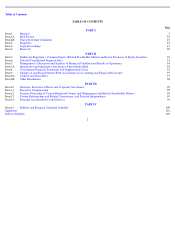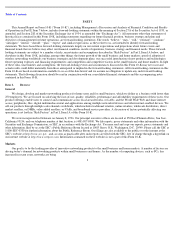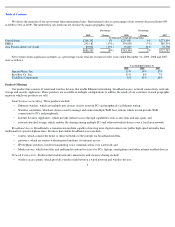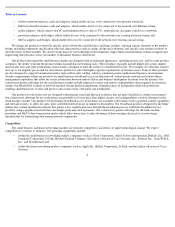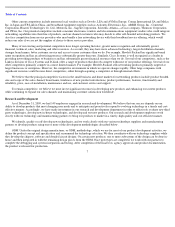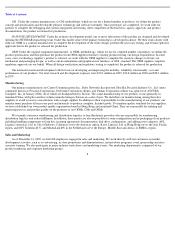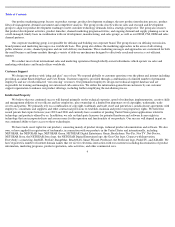Netgear 2009 Annual Report Download - page 14
Download and view the complete annual report
Please find page 14 of the 2009 Netgear annual report below. You can navigate through the pages in the report by either clicking on the pages listed below, or by using the keyword search tool below to find specific information within the annual report.
Table of Contents
Economic conditions are likely to materially adversely affect our revenue and results of operations.
Our business has been and may continue to be affected by a number of factors that are beyond our control such as general geopolitical,
economic and business conditions, conditions in the financial services markets, and changes in the overall demand for networking products. A
severe and/or prolonged economic downturn could adversely affect our customers’ financial condition and the levels of business activity of our
customers. Uncertainty about current global economic conditions could cause businesses to postpone spending in response to tighter credit,
negative financial news and/or declines in income or asset values, which could have a material negative effect on the demand for networking
products.
The ongoing economic problems affecting the banking system and financial markets and the continued uncertainty in global economic
conditions have resulted in a tightening in the credit markets, a low level of liquidity in many financial markets, and extreme volatility in credit,
equity, currency and fixed income markets. There could be a number of follow-on effects from these economic developments and negative
economic trends on our business, including the inability of customers to obtain credit to finance purchases of our products; customer
insolvencies; decreased customer confidence to make purchasing decisions; decreased customer demand; and decreased customer ability to pay
their trade obligations.
If conditions in the global economy, U.S. economy or other key vertical or geographic markets remain uncertain or weaken further, such
conditions could have a material adverse impact on our business, operating results and financial condition. In addition, if we are unable to
successfully anticipate changing economic and political conditions, we may be unable to effectively plan for and respond to those changes,
which could materially adversely affect our business and results of operations.
Some of our competitors have substantially greater resources than we do, and to be competitive we may be required to lower our prices
or increase our sales and marketing expenses, which could result in reduced margins and loss of market share.
We compete in a rapidly evolving and highly competitive market, and we expect competition to continue to be intense, including price
competition. Our principal competitors in the small and medium business market include 3Com, Allied Telesyn, Buffalo, Dell, D-Link, Fortinet,
Inc., Hewlett-Packard, the Linksys division of Cisco Systems, SonicWALL, WatchGuard. Our principal competitors in the home market include
Apple, Belkin, D-Link and the Linksys division of Cisco Systems. Our principal competitors in the broadband service provider market include
Actiontec, ARRIS, Comtrend, Huawei, Motorola, Sagem, Scientific Atlanta-a Cisco company, ZyXEL, Thomson and 2Wire. Other current and
potential competitors include numerous local vendors such as Devolo, LEA and AVM in Europe, Corega and Melco in Japan and TP-Link in
China. Our potential competitors also include consumer electronics vendors who could integrate networking capabilities into their line of
products, and our channel customers who may decide to offer self-branded networking products. We also face competition from service
providers who may bundle a free networking device with their broadband service offering, which would reduce our sales if we are not the
supplier of choice to those service providers.
Many of our existing and potential competitors have longer operating histories, greater name recognition and substantially greater
financial, technical, sales, marketing and other resources. These competitors may, among other things, undertake more extensive marketing
campaigns, adopt more aggressive pricing policies, obtain more favorable pricing from suppliers and manufacturers, and exert more influence on
sales channels than we can. We anticipate that current and potential competitors will also intensify their efforts to penetrate our target markets.
For example, price competition has intensified in our industry. Average sales prices have declined in the past and may continue to decline in the
future. These competitors may have more advanced technology, more extensive distribution channels, stronger brand names, greater access to
shelf space in retail locations, bigger promotional budgets and larger customer bases than we do. These companies could devote more capital
resources to develop, manufacture and market competing products than we could. If any of these companies are successful in competing against
us, our sales could decline, our margins could be negatively impacted and we could lose market share, any of which could seriously harm our
business and results of operations.
12


